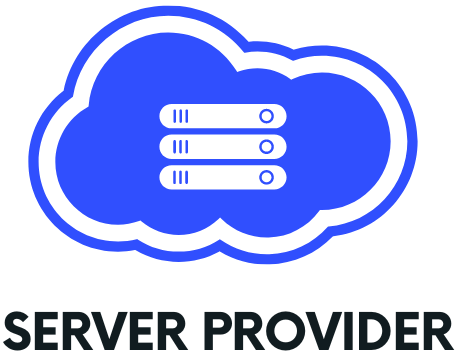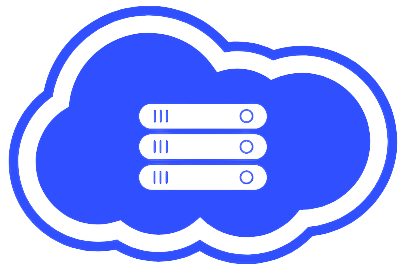If you run a high-traffic website or online platform, it’s essential to have a reliable and scalable hosting solution to support your business needs. One of the best options for high-traffic websites is a dedicated server, which is a physical server that is dedicated solely to your website or application. In this blog post, we’ll take an in-depth look at using a dedicated server for high-traffic websites, and provide you with a comprehensive guide on how to set up and manage your dedicated server for optimal performance.
Introduction to Dedicated Servers for High-Traffic Websites
A dedicated server is a physical server dedicated solely to your website or application and is not shared with any other customers or users. This means that you have complete control over the server and can customize it to meet the specific needs of your website or application. Dedicated servers are typically more expensive than shared hosting solutions, but they offer much higher performance and reliability, making them ideal for high-traffic websites.
Benefits of Using a Dedicated Server for High-Traffic Websites
There are several benefits to using a dedicated server for your high-traffic website:
High performance and reliability: Dedicated servers offer much higher performance and reliability compared to shared hosting or cloud-based solutions. This is because a dedicated server is specifically designed to handle the high-bandwidth and high-demand requirements of high-traffic websites.
Greater control and flexibility: With a dedicated server, you have complete control over the hardware and software used to run your website or application. This allows you to customize and configure your server to meet the specific needs of your business and gives you greater flexibility to scale and adapt as your website grows.
Security: Dedicated servers offer a higher level of security compared to shared hosting, as you have complete control over the server and can implement advanced security measures to protect your data and systems.
Choosing the Right Dedicated Server for Your Website
When choosing a dedicated server for your high-traffic website, there are several key factors to consider:
Size and scale of your website: It’s important to choose a dedicated server that is appropriately sized to handle the demands of your website. You’ll need to consider the volume of traffic, the number of users, and the complexity of your website or application to determine the number of resources (e.g. CPU, RAM, storage) you’ll need.
Location of the server: The location of your dedicated server can impact the performance of your website. It’s important to choose a server that is physically close to your users, as this will help minimize latency and improve the user experience.
Connectivity and bandwidth: The connectivity and bandwidth of your dedicated server are important factors to consider, as they will impact the performance and reliability of your website. Make sure to choose a server with a fast and Once you’ve chosen the right dedicated server for your high-traffic website, the next step is to set it up and configure it properly. Here are some key steps involved in this process:
Install and configure your operating system: You’ll need to choose and install an operating system on your dedicated server. Common options include Linux distributions such as CentOS, Ubuntu, Debian, or Windows Server. You’ll also need to configure your networking settings, create user accounts, and set up any additional software or tools that you’ll need.
Install and configure your web server software: Next, you’ll need to install and configure your web servers software, such as Apache or Nginx. This will involve setting up virtual hosts, configuring your domain name, and setting up any additional modules or plugins that you’ll need.
Upload and configure your website or application: Once your web server is set up and configured, you’ll need to upload your website or application to the server and configure it to run properly. This will typically involve setting up a database, installing dependencies, and configuring any application-specific settings.
Test and optimize your server: Once your server is set up and configured, it’s important to test it thoroughly to ensure that it’s working properly and that your website or application is performing optimally. This may involve adjusting your server configuration, implementing caching or optimization techniques, or implementing QoS (quality of service) measures to prioritize traffic.
Best Practices for Managing and Maintaining Your High-Traffic Website on a Dedicated Server
To ensure that your high-traffic website is running smoothly and efficiently on your dedicated server, it’s important to follow some best practices for management and maintenance:
Monitor your server performance: Regularly monitor your server’s performance to ensure that it has sufficient resources to handle the demands of your website. This may involve monitoring CPU, RAM, and storage usage, as well as network traffic and bandwidth utilization.
Keep your software and firmware up to date: Make sure to keep your operating system and web server software up to date to ensure that you have the latest security fixes and performance improvements.
Implement backup and disaster recovery measures: Protect your website from data loss or downtime by implementing backup and disaster recovery measures, such as regular backups and failover systems.
Advanced Features and Tools for Optimizing Your Dedicated Server for High-Traffic Websites
There are several advanced features and tools that you can use to optimize and enhance your dedicated server for high-traffic websites:
Load balancing: If you have a high-traffic website with a large volume of traffic, you may want to consider implementing load balancing to distribute the workload across multiple servers. This can help improve performance and reliability.
CDN (Content Delivery Network): A CDN is a network of servers that are designed to deliver content more efficiently to users based on their geographic location. By using a CDN, you can improve the performance of your website by reducing the distance that data needs to travel between the server and the user.
Caching: Implementing caching techniques can help improve the performance of your website by storing commonly accessed data in memory, so it can be served more quickly to users. This can reduce the load on your server and improve the user experience.
Troubleshooting and Fixing Common Issues on Your Dedicated Server for High-Traffic Websites
As with any complex system, it’s not uncommon for issues to arise with your dedicated server for high-traffic websites. Here are some common issues that you may encounter, and some steps you can take to troubleshoot and fix them:
Website downtime: If your website is experiencing downtime, it could be due to server issues, network problems, or software configuration errors. To troubleshoot this issue, you’ll need to check your server logs, monitor your server performance, and verify that your web server software and website are configured properly.
Slow loading times: If your website is loading slowly, it could be due to server resource constraints, network issues, or inefficient code. To troubleshoot this issue, you’ll need to monitor your server performance, optimize your website code, and possibly implement caching or optimization techniques.
Security breaches: If your website is compromised or suffers a security breach, it’s important to take immediate action to protect your data and systems. This may involve restoring from a backup, implementing additional security measures, and conducting a thorough investigation to identify the cause of the breach.
Conclusion and Future Considerations
Using a dedicated server for your high-traffic website offers many benefits, including high performance, reliability, control, and security. By following the best practices outlined in this guide and utilizing advanced features and tools, you can ensure that your dedicated server is optimized for high-traffic websites and able to support the growth of your business. As your website or application grows and evolves, it’s important to continually monitor and optimize your server to ensure that it continues to meet your needs.

